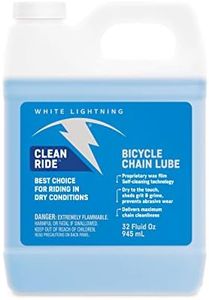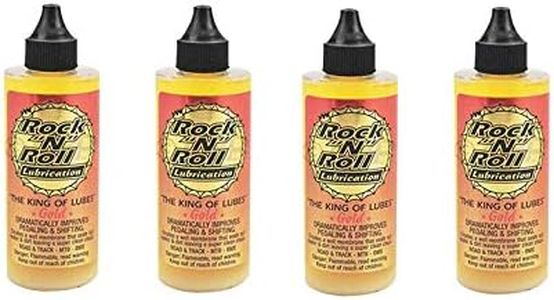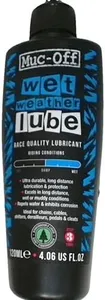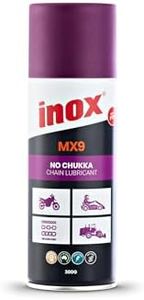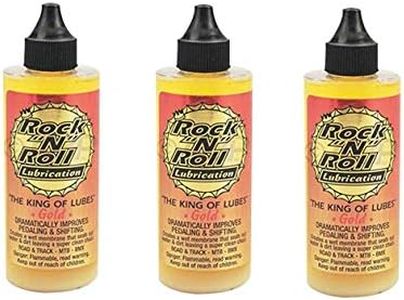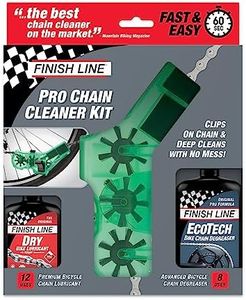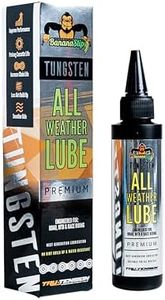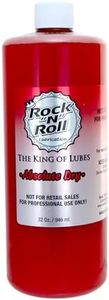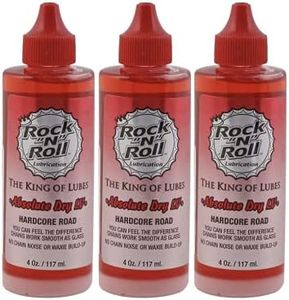We Use CookiesWe use cookies to enhance the security, performance,
functionality and for analytical and promotional activities. By continuing to browse this site you
are agreeing to our privacy policy
10 Best Bicycle Chain Lubricants
From leading brands and best sellers available on the web.Buying Guide for the Best Bicycle Chain Lubricants
Choosing the right bicycle chain lubricant is important for keeping your bike running smoothly, preventing rust, and extending the life of your drivetrain. The goal is to match the lubricant type to your riding conditions, maintenance habits, and how often you ride. There are various types to consider, each with its own strengths and trade-offs. Knowing what makes each type unique helps you get the best performance and the least mess or wear.Type of Lubricant (Wet, Dry, Ceramic, Wax-based)The type of lubricant matters because it determines how well your chain will be protected in different riding conditions. Wet lubricants are oily and designed for wet or muddy environments, staying on the chain in rain but attracting more dirt. Dry lubricants use lighter carriers that evaporate, leaving behind a film; they are ideal in dry, dusty conditions and result in a cleaner chain but don't last as long in the rain. Ceramic and wax-based lubricants aim to reduce friction and wear even more; wax stays very clean but washes away easily, and ceramic adds particles for smoothness and longevity. Choose wet for rainy or humid climates, dry for mostly dry rides, and ceramic or wax if you want high performance and regularly clean your chain.
Longevity and Reapplication IntervalThis spec refers to how long the lubricant will effectively protect your chain before it needs to be reapplied. Wet lubricants tend to last longer, especially in bad weather, so they're ideal if you want to relube less frequently. Dry and wax-based lubes require more regular application. Longevity may matter more if you go on long rides, commute regularly, or don’t want to clean and relube too often, while those who clean their bike often or ride in forgiving conditions can opt for shorter-lasting but cleaner options.
Cleanliness and Dirt AttractionA crucial aspect is how much dirt, dust, or grime the lubricant attracts to your chain. Wet lubricants protect well but act like a magnet for dirt, making your chain and cassette messy over time. Dry and wax-based lubricants keep your drivetrain cleaner but may need to be reapplied more often. If you ride in dusty, sandy, or generally dry areas, or you prioritize a clean bike, you may prefer dry or wax-based lubricants. For muddy, all-weather, or winter riding, you might accept getting your chain dirtier in exchange for better protection.
Ease of ApplicationSome lubricants are easier to apply than others. Wet lubricants are straightforward—just drip them on and wipe off the excess. Dry and wax lubricants may require the chain to be extra clean before application and sometimes need time to dry before riding. For those seeking convenience and less fuss, a wet lubricant can be forgiving. If you enjoy bike maintenance or want top performance, you may go for wax or even immerse your chain for the best results.
Environmental Factors (Corrosion Resistance)Lubricants vary in their ability to protect your chain from rust and corrosion, especially if you ride in rainy, salty, or coastal areas. Wet lubricants generally offer better protection against water penetration and rust than dry types. If your riding environment tends to be damp, wet, or near oceans, prioritize a lubricant that specifically mentions rust and corrosion resistance.


